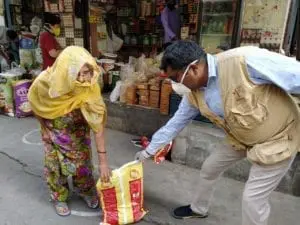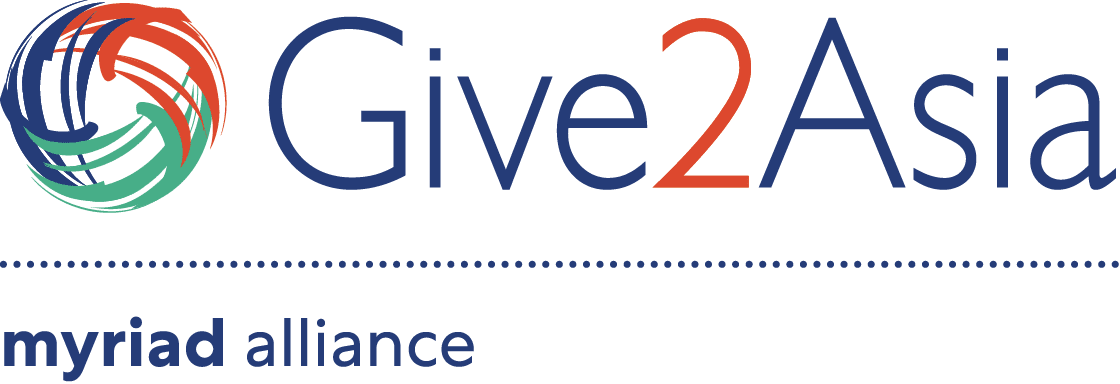The COVID-19 pandemic created an ongoing humanitarian crisis in India. Local nonprofits are mobilizing a massive response.
 by Parul Sachdeva (Country Advisor, India)
by Parul Sachdeva (Country Advisor, India)
The first few cases of COVID-19 in India were reported in late January from Kerala’s Thrissur district in students who had returned home from Wuhan University. Over time, the situation worsened with the return of people traveling from other affected countries.
On March 24th, India began mandatory nationwide lockdown procedures—initially for 21 days—affecting the entire 1.3 billion-person population of India. Later, the lockdown with few relaxations was extended till end of May. On June 1, the government started “unlocking” the country (excluding “containment zones”) in phases. Currently, different states are exercising their powers in deciding various restrictions based on the severity of the situation.
Current Situation
India, home to 18% of the world’s population, currently has the largest number of confirmed cases in Asia. It also has the third highest number of confirmed cases in the world after the United States and Brazil. As of August 30, the number of total confirmed cases exceeded 3.6 million, with 65,435 mortalities. Six cities account for around half of all reported cases in the country: Mumbai, Delhi, Ahmedabad, Chennai, Pune and Kolkata
The lockdown was implemented to preempt a huge surge in the number of cases. However, it created huge economic hardships and hunger situations for millions. Without any time to prepare for the lockdown, the shutdown left daily wage earners, factory and agricultural workers, small businesses, and marginalized communities without food and living expenses. Thus, days into the lockdown, lakhs (hundreds of thousands) of migrants walked, cycled or took rides to their home states. This mass exodus from cities and towns across India continued throughout the lockdown months. The images of their struggle for survival shook the nation and made global headlines.
 Nonprofit Sector Response
Nonprofit Sector Response
In response to this crisis, multiple NGOs across the country initiated large-scale efforts, often with the help of volunteers. From feeding the hungry and providing hygiene kits to supporting district administration for complementing and supplementing public health systems, NGOs have continued working on various challenges created by this pandemic.
In 13 states, NGOs have fed so many people in need during the lockdown that they exceeded government-run programs. Shelter for nearly 40% of the 10.37 lakh (1 million) displaced people was arranged by NGOs.
Give2Asia’s nonprofit partners—including SEEDS, The Akshay Patra Foundation, Smile Foundation, Swasth Foundation, and many others—have worked tirelessly to provide cooked meals, dry rations, and hygiene kits to affected communities across India. Through one grant alone, almost 8 million meals were distributed during the lockdown period.
As the situation developed, the nonprofit response expanded to include supplying medical equipment to underserved areas, providing home-based education, addressing mental health and domestic violence issues, and economic recovery efforts.
Diligent work by both the government and nonprofit sector has increased access to testing facilities and other related health services.
Next Steps
This pandemic has changed the world fundamentally. The crisis it has brought is unprecedented in scale, with the poor and the marginalized reeling under its impact the most. Clearly the situation would have been even worse had not hundreds of NGOs acted in time to mitigate the effects. But even with these measures, vulnerable communities still need support as the virus continues to spread beyond metropolitan cities.
Given this unprecedented disaster, there is an urgent need to ensure the food security, access to health and providing livelihood support. This is especially needed for informal workers, small farmers, micro entrepreneurs and other fringe workers. The need for medical and safety equipment remains great, especially in smaller towns and villages. Furthermore, the recent spate of natural disasters (Cyclone Amphan and severe flooding in the states of Assam and Bihar) compounds the need for direct aid in affected areas.
Give2Asia’s donors have provided crucial support for Indian communities hit hard by the COVID-19 pandemic, and we thank you for your continued support. As we look towards the future, there is still much work to be done—both to provide immediate relief and to enable India’s long-term recovery after this pandemic.
How to Give
To make an individual donation or to learn more about corporate giving opportunities through Give2Asia, visit our India COVID-19 campaign page or contact our international grantmaking team.
You can learn more about Give2Asia’s COVID-19 response strategy and impact to date in our recent Progress Report: COVID-19 Pandemic Response — The First 100 Days.
Photos courtesy of SEEDS and Gwydion Williams



